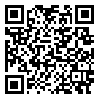Diabetes is one of the important issues in the medical field and determination of appropriate rate of insulin injection in order to regulation of blood glucose level is vital for diabetics. In this thesis the problem of tracking of desired plasma blood glucose by using subcutaneous insulin administration is expressed. Mathematical model is used in this thesis for glucose-insulin regulation system was based on Palumbo delayed nonlinear model and is one of the most comprehensive models in recent years. The control method is used by Palumbo based on feedback linearization is one of the most complete control methods in this field. The main problem of this method was locus location of the desired closed-loop poles issue based on trial and error. Location of closed-loop poles away from imaginary axis can cause reduce of oscillations and increase of steady state error that in insulin injection issue is considered a fundamental problem. To fix this problem, in this paper for the first time employing combination of the fuzzy logic controller optimized by genetic algorithm with feedback linearization method as hybrid method is used to regulate the blood glucose level in diabetic patients and stabilization of blood glucose level three diabetic patients with different initial glucose level is simulated. One of the advantages of the proposed method is very high robustness controller against the uncertainty and disturbance. Finally, the simulation results of proposed control methods are compared with the control method based on Palumbo poles location, which indicates the phenomenal functioning of the proposed controller for tracking of desired blood glucose level at the lowest possible error in the presence of uncertainty or without the uncertainty.
Received: 2016/06/11 | Accepted: 2016/09/28 | Published: 2016/09/28
| Rights and permissions | |
 |
This work is licensed under a Creative Commons Attribution-NonCommercial 4.0 International License. |



